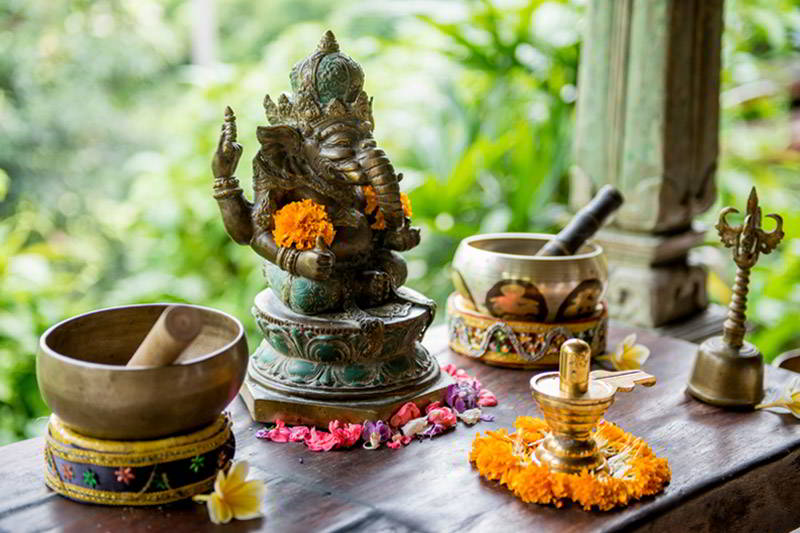Story of Mahāmāya, the Great Illusion.
December 12, 2019
I chose this set of images (utkata konasana with namaste mudra) to share some thoughts and interesting story of false reality or Illusion. I am recently reading a book of myths of the asanas and I came across with the story of Mahāmāya "the great Illusion”. First of all, when I read it and did more research I found that according to many traditions, cultures, civilization, etc., therefore, you can find the name Mahāmāya in different context. This story is just one of many myths you can find.
The story begins with a demon named Mahishasura who threatened the gods and goddesses with overthrowing them from the heavens. The demon tempted them with worldly and momentary pleasures. These distractions distressed the sacred trinity: Shiva, Brahma and Vishnu. To stop the demon, the trinity joined forces and created a great Goddess named Mahāmāya. [This union of the 3 to create her is very similar to the creation of maya (illusion) with the union of the 3 gunas.]
Mahāmāya, along with her lion as a companion, fought fiercely against the demon until they managed to overthrow him and kill him. The triumph of Mahāmāya brought back light and harmony to the heavens. Mahāmāya means the great illusion and its a reminder of how we can easily fall into false realities.
Here is where I want to link the story to Patanjali’s teachings. An important concept in Patanjali’s yoga sutra is perception and action. How do we perceive our reality? our job, our relationships, environment, culture, ourselves, and so on; we believe that we perceive “correctly” and act accordingly to that perception, but Avidya (incorrect comprehension) plays an important role in daily life. Avidya can be understood as the accumulated result of our many unconscious actions that will create ignorance or false truths; we are not aware of them and we trust this perceptions. The constant trusting of the false perceptions create habits (samskaras) that will cover your mind like a veil that blurs our consciousness.
Avidya has four ramifications: The first one is the ego, beliefs and ideas that create comparison and division between yourself and others. The second avidya is rāga, the wanting things because they were pleasent before and we believe they will give us constant pleasure. The third is dvesa, the rejection of things because they have been unpleasant in the past. Fear is the forth and last. We experience all of them and all of them clouds our perception.
Mahāmayā fights against changing illusion that creates false reality, rather than see it as it is. Our mind is like this story's demon, creating avidyas that will create distractions and separate you from your true nature.
Take a moment to reflect on how these four ramifications of avidya cloud your consciousness and create this false reality. We can divide ourselves by feeling superior or inferior to others, we can live in a city full of luxuries, or in a neighborhood in need and poverty, we can escape and avoid experiences simply because they are unpleasant, we can live in constant fear of what could happen but none of the above is accurate, it is not your reality; or we can work daily to accept without judgment and understand our true nature of compassion and union. Your yoga practice will help to remove the veil and have a better understanding of our reality.
Thank you to Alanna Kaivalya and Arjuna van Der Kooji for the lovely compilation of myths and stories of the asanas.
